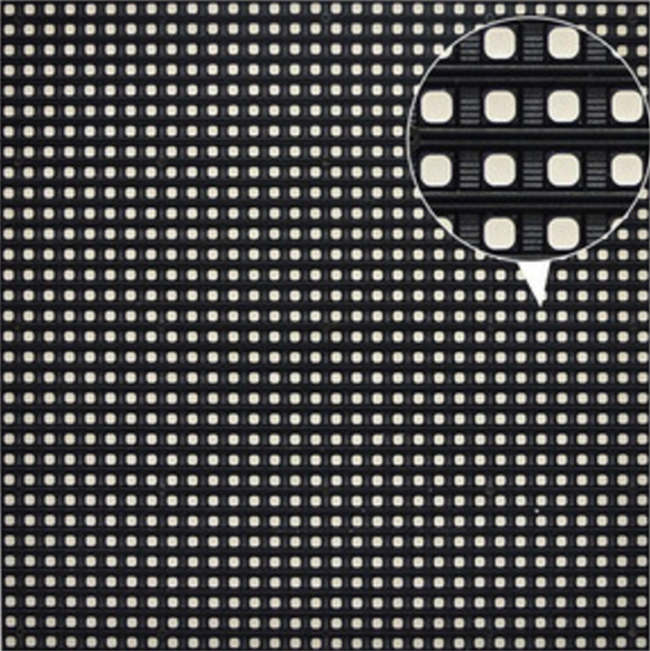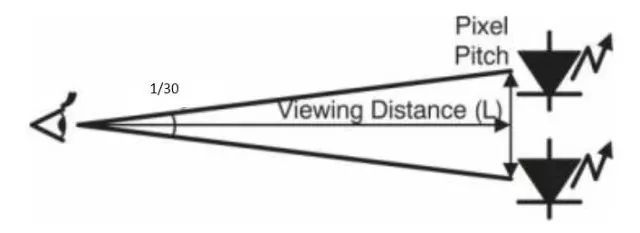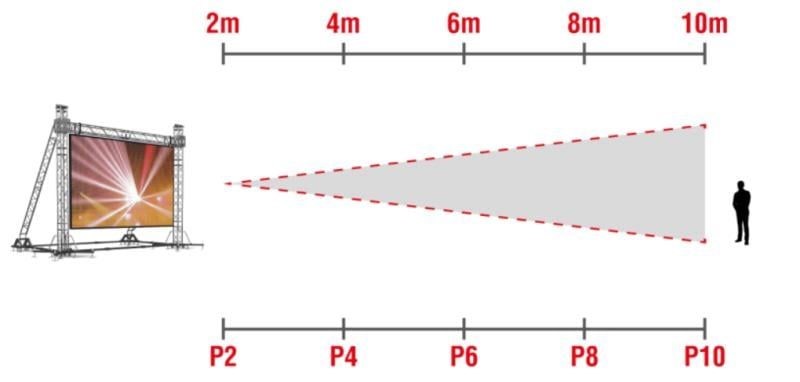How to perfectly match the pixel and size of the LED large-screen display is a concern of many end users. First of all, we should be able to understand which factors are related to the calculation of LED large screen size. The answer we give is the relationship between size, pixels and the golden triangle.
Pixel density concept:
What does pixel mean and what does pixel density mean? A pixel is the smallest unit of light in an LED display. A pixel is also an LED lamp bead. Pixel density is the number of pixels on an LED display per square meter.
Resolution concept:
Resolution refers to the number of pixels in the length and width of the LED display.

led large screen display
Under the condition that the size of the large-size LED screen remains unchanged, the smaller the distance between the high points of the pixel points, the greater the distance between the low points of the pixel points. For example, if the width of a large LED screen is 5.12 meters, to make a p2.5 large screen, the pixels are equal to 2048 dots. If the pixel is reduced to 1024, the specification is equal to 5120△1024 = 5, and the distance between points is 5mm.
If the spacing of LED large screen dots is determined to be p2.5, the larger the size, the larger the pixels. For example, if we plan to build a large screen display with a width of 3.2m, the pixels will be equal to 3200△2.5 = 1280 dots. When the width is increased to 4.8m, the calculation formula is 4800△2.5 = 1920 pixels.
If the pixels displayed on the large LED electronic screen remain the same, for example, I want to achieve the width of 1536 lamp beads, the larger the distance between the dots, the larger the size. For example, if I plan to do indoor P3 large-screen display, the width is 1536 × 3 = 4.608m. If I plan to change to P4 large screen display, the width is 1536 × 4 = 6.144 meters.
According to the above points, we can know that in order to perfectly match the pixel and size of the LED large-screen display, we must know the size, specification, and model of the display, so that the effect displayed by the large-screen display can be more perfect.

how to choose:
Under the same display area, the greater the pixel density, the greater the resolution, the more delicate the display screen, and the higher the cost of course. On the contrary, the display screen is rougher, and the cost is of course lower. So how do we choose pixel density or resolution?
Generally speaking, the official website of LED display manufacturers will disclose the pixel pitch (dot pitch, pitch), but not the pixel density or resolution. Of course, knowing the pixel pitch, you can also calculate the pixel density and resolution. Under the same display area, the smaller the pixel pitch, the greater the pixel density and the greater the resolution.
Pixel density = (1000mm/pixel pitch mm)*(1000mm/pixel pitch mm)dots/m2
Resolution = (display area length mm/pixel pitch mm) * (display area width mm/pixel pitch mm)
In addition, the screen is selected by the pixel pitch, and it is easier to calculate the viewing distance. You don’t have to look at pixel density or resolution to choose a screen. Let’s see how to choose the pixel spacing (dot spacing, spacing).

Although the life of LED lamp beads can be as long as 100,000 hours, due to the high density and the small-pitch LED display is mainly used in indoor applications, the thickness is required to be low, it is easy to cause heat dissipation difficulties, and then cause local failures. In actual operation, The larger the size of the screen, the more complicated the maintenance process will be, and the maintenance cost will naturally increase accordingly. In addition, the power consumption of the display should not be underestimated, and the operating costs of large-sized displays are generally higher in the later stage.
The access problem of multi-signal and complex signals is the application of small-pitch LED indoors. Different from outdoor applications, indoor signal access has the requirements of diversification, large number, scattered locations, multi-signal display on the same screen, and centralized management. In actual operation, For small-pitch LED displays to be used efficiently, signal transmission equipment must not be taken lightly.